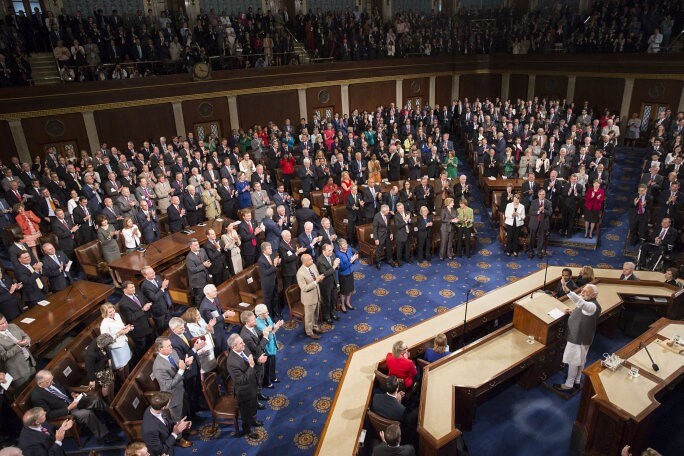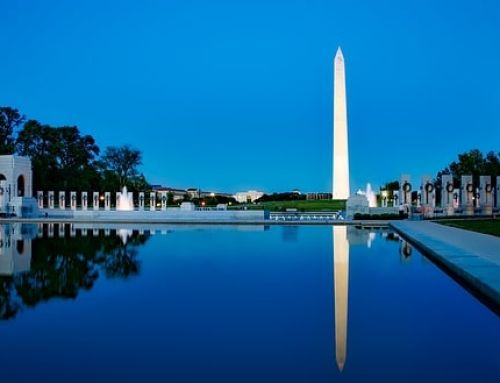American electoral system: how does it work?
04 Dec 13:30

The US presidential election is a worldwide event. Every four years, Americans are asked to vote for their own president. However, the American election system is extremely complicated and, in many ways, distinct from ours.
As a result, in this post, we will delve deeper into the operation of the US election system. We’ll see what the primary elections and big voters have to say about it. We will then go over the President of the United States’ responsibilities and qualifications.
The form of government of the United States
Before getting into the operation of the American electoral system, it is important to understand the type of government in place in the United States.
The United States is a presidential federal republic. Two aspects of this denomination are critical to understanding the American political system:
- presidential: the designation of the US system of government so emphasises the primacy of the figure of the president. Then we’ll discover what his abilities and obligations are.
- A state is characterised as federal when it incorporates other governmental institutions with sovereign power. In the United States, these are the 50 federal states.
Federal states have more authority than, say, Italy’s 20 administrative regions. According to the US constitution, each state has administrative and governmental authority.
In addition to the 50 federal states, the United States has a federal district: the District of Columbia.
The role of the president of the United States of America
Because the United States is a presidential republic, the president of the United States has more powers than the president of the Republic of Italy. In actuality, the president possesses the executive authority of the federal government, enforcing the laws, according to the political order of the United States. He is also the commander-in-chief of the United States military.
The Congress of the United States of America, the country’s legislative body, has legislative power. The congress is a bicameral body composed of:
- House of Representatives: 435 representatives chosen every two years;
- The Senate Chamber is made up of 100 senators who serve six-year terms.

The American Congress
The Supreme Court of the United States, on the other hand, wields the country’s judicial power.
Who can run for the election of the president of the USA?
The following qualifications must be completed in order to run for President of the United States:
- be an American citizen by birth: naturalised citizens are not eligible for this position;
- must be at least 35 years old
- having spent at least 14 years in the United States
Who can run for the election of the president of the USA?
The following qualifications must be completed in order to run for President of the United States:
- be an American citizen by birth: naturalised citizens are not eligible for this position;
- must be at least 35 years old
- having spent at least 14 years in the United States
The President of the United States’ mandate also fits the following criteria:
- The president’s term is four years long.
- The president’s tenure officially begins on January 20, after Election Day.
- The president can only be re-elected once, for a total of two consecutive terms.
- In the case that the president dies or resigns, his vice president is in charge of terminating the mandate.
- When the president’s term expires, he or she does not become a senator, as is the case in Italy.
Other powers of the American president
In addition to executive authority, the winner of the American elections has access to other authorities.
The president chooses nine justices to the Supreme Court. As a result, the president has power over the country’s judicial system.
Congress, for its part, has the authority to pass legislation. The president, on the other hand, has the power to veto this measure. The measure now goes to Congress for a second vote. Members of Congress can try to override the president’s veto in order to enact the law. However, this is only possible if the following requirements are met:
- Voting via open ballot means that the vote will no longer be secret;
- The necessity of a two-thirds majority of voters is extremely unusual. In reality, it indicates that members of the president’s own party oppose his choice.
How do you elect the American president? A three stage system
From the outside, the American election system looks to be more complicated. In reality, presidential election day is not the only event that influences who becomes President of the United States. This procedure is divided into three stages:
- Elections in primaries;
- Elections for President;
- The electoral vote is cast in the electoral college.
Each of these phases will be discussed in depth below.
Who can vote in the US?
The right to vote is almost universal in the United States. In truth, all citizens who are at least 18 years old, the age of majority in the United States, are eligible to vote for president.
Citizens from all states have the right to vote for their own representatives in Congress. Residents of the District of Columbia and unincorporated regions of the United States, on the other hand, are exceptions.
Guam, Puerto Rico, the Northern Mariana Islands, and the US Virgin Islands are among them. Prior to 1971, only those above the age of 21 could vote.
American primary elections
The institution of primary elections is not provided for or regulated by the US constitution. However, party primaries have been held regularly for over a century.
As a result, primary voting in America might change depending on the state or the party. Citizens directly choose their party’s presidential candidate during primary elections.
These elections are normally held over a five-month period. A succession of primaries and conventions will take place during this time to choose which delegates will attend the ultimate party convention.
The names of the candidates for the positions of President and Vice-President for each party are announced during this last ceremony. These two candidates comprise the party’s “presidential ticket.”
The two major political parties running for president are the Democrats and the Republicans. However, independent candidates can also compete.

Republicans vs Democrats
Finally, the outgoing president and vice president are automatically admitted to the presidential election. This, however, is only conceivable if the president has not previously served two terms.
The US presidential election
The presidential election system in the United States is, in reality, indirect voting. When Americans vote, they indicate their choice for a presidential candidate.
In reality, they vote for the group of voters that support that candidate. The number of electors, which we shall discuss later, is thus critical for understanding how US elections function.
Every individual has the right to vote for a certain candidate. Alternatively, he might vote for all candidates affiliated with a political party.
The presidential election procedure is largely decentralised. In actuality, electoral votes are counted at the state level. This implies that the vote is counted individually in each state.
The voting mechanism operates on the winner-take-all concept. As a result, the candidate who receives the most votes has all electors assigned to a certain state.
America’s Big Voters
To truly comprehend this country’s voting system, one must first comprehend who America’s major voters are.
Electors, often known as presidential electors, are elected to represent American citizens in the electoral college. This has resulted in the challenge of selecting one of the contenders for the position of US President.
Each state is entitled to a certain number of electors based on its population. In general, each state has a minimum of two electors. California (now with 55 electors) and Texas have the most electors (currently 38).
The presidential candidate who receives the most votes in a state receives all of the electors from that state. Maine and Nebraska, on the other hand, are exceptions. In actuality, the major voters are elected here using the proportional approach.
There are 538 electors in the American electoral system. These are classified as follows:
- Senators totaling 100;
- There are 435 deputies.
- The District of Columbia will be represented by three electors.
The electoral college of the USA
The electoral college is formed after the presidential election establishes who America’s major voters are. Only at this stage can the new American president’s and vice president’s names be established.
Voters are summoned to their state capitol to vote for one of the presidential candidates. They are not compelled by law to vote for a certain candidate.
Typically, they vote for the candidate who has openly backed them and has won the seats in their state. Indeed, there have been relatively few incidents of disloyal electors throughout American history.
The electors in the United States vote by secret ballot. The presidential candidate who receives at least 270 votes is declared the winner. The same criteria apply to the selection of the vice president. After voting is completed, the results are tabulated by Congress.
US election date
The presidential election period and the electoral college are established under the US constitution.
- Primary elections typically begin in early January or early February of each leap year, with the Iowa Caucus. They typically last 5 months and terminate in June.
- Presidential Election: When to vote in US elections is determined by the constitution. The Tuesday following the first Monday in November is designated as Presidential Election Day. This avoids Election Day happening on November 1, which is a federal holiday. Every four years, in leap years, presidential elections are held.
- Electors vote in the electoral college on the first Monday after the first Wednesday in December. The first week of January is when Congress tabulates votes.
- Inauguration of the President: Following the elections, the new President takes office on January 20.
A concrete example: voting in the 2020 US presidential election

Donald Trump and Joe Biden
Here is the 2020 election timeline to help you understand how the US presidential election that elected Joe Biden unfolded:
- Primary elections will be held from February 3 to June 23, 2020.
- The presidential election (Election Day) is scheduled for November 3, 2020.
- Election date: December 14, 2020;
- Congressional vote totals will be tallied on January 6, 2021.
- Joe Biden’s inauguration date is January 20, 2021.
The American electoral system in a nutshell
The table below highlights the major events and procedures of the US presidential election.
| Election | Who votes | What do you vote for? |
|---|---|---|
| Primary elections | American citizens of legal age | Party candidates for the role of president and vice president |
| Presidential Elections | American citizens of legal age | Major American voters, representatives from each state |
| Electoral College | Big voters | President and Vice Presidents of the USA |
The American electoral system: indirect democracy
As we have seen, the election system in the United States is rather complex. Its origins may be traced back to the country’s and democracy’s inception. American voters do not directly vote for a presidential candidate under this system.
In reality, the major voters will have the last say in the election of the President of the United States. This method also tries to guarantee that residents from smaller states and rural regions are represented. Today, however, it is the subject of intense investigation and debate.
Understanding how the American election system works is critical for everyone, not just Americans. In reality, knowing the system that elects the world’s most powerful political personalities may help everyone.
Learn more about American constituencies in this TED video (subtitled in Italian):
FIND OUT MORE:
Have a question about ESTA? Read our Frequently Asked Questions section.
return to the home page.


























